|
Editorial Directory
|
 |
|
Editorial Home
|
|
|
 |
|
Reef
|
|
 |
|
Cave
|
|
 |
|
Wreck
|
|
 |
|
Photo/Video
|
|
 |
|
Equipment
|
|
 |
|
Expedition
|
|
 |
|
Dive Med
|
|
 |
|
Other Editorial
|
|
|
|
|
|
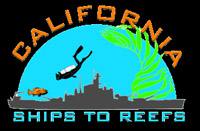 |
|
|
|
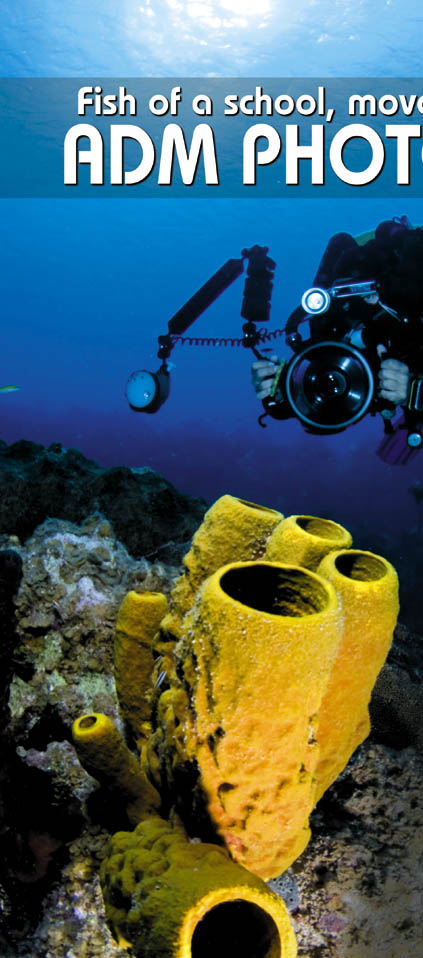 |
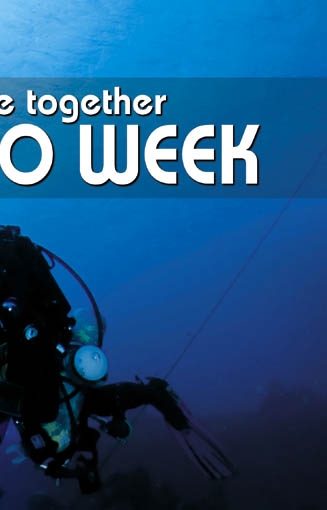 |
|
Text by Curt Bowen
|
|
Photography by Doug Ebersole,
Bruce Boaz, Dora Valdez,
Robert Hew, and Curt Bowen |
|
|
|
A kaleidoscope of soft corals clusters on every inch of the descending wall, creating a dense curtain of color that shifts and shimmers in your viewfinder. The bright sunlight creates a million hues of contrast as it glistens through the waves on the water’s surface, down to the deepest blue of the vast cold ocean that plummets below your fins.
Hovering closer to the vertical wall, your twin underwater strobes fill in the deep reds, yellows, and greens that have been hidden by the depths; and your camera captures the infinite detail of the surrounding marine life and the model divers silhouetted against the glistening rays that descend from the lighter blue waters above. Your skill, equipment, and creative drive combine to freeze a transcendent moment, fleeting and beautiful, but now captured forever to enjoy and share. |
|
|
|
|
|
|
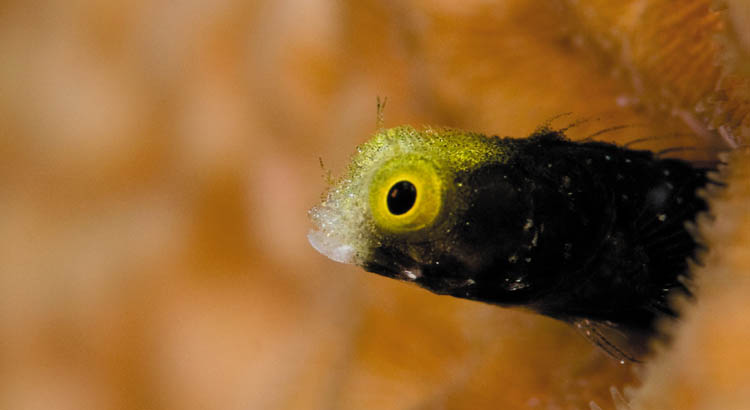 |
|
One can imagine this perfect shot: clean, crisp colors, in proper focus, and framed just perfectly…. But if it were that easy, everyone would be amazing underwater photographers! And the rest of us wouldn’t have to snap that shutter hundreds of thousands of times in the never-ending attempt to capture that once-in-a-life-time perfect image.
The evolution from an open water scuba diver to an inspiring underwater photographer is a long and sometimes frustrating process. Years of practice and error all too often defeat the novice photographer before they are able to grasp the amazingly simple concept of underwater photography.
|
|
Changing the famous quote “birds of a feather flock together” to “fish of a school move together,” imagine a group of underwater photographers with the same interest — but varying skill levels — who come together for a week-long session of practice, increasing knowledge, and working alongside each other for the simple objective of becoming better. This was the exact goal I wished to achieve when we designed the first Advanced Diver Magazine’s photo week.
Next, I needed a location that could supply a multitude of photo divers who came from different experiences and backgrounds — from the new open water to the extreme deep |
|
|
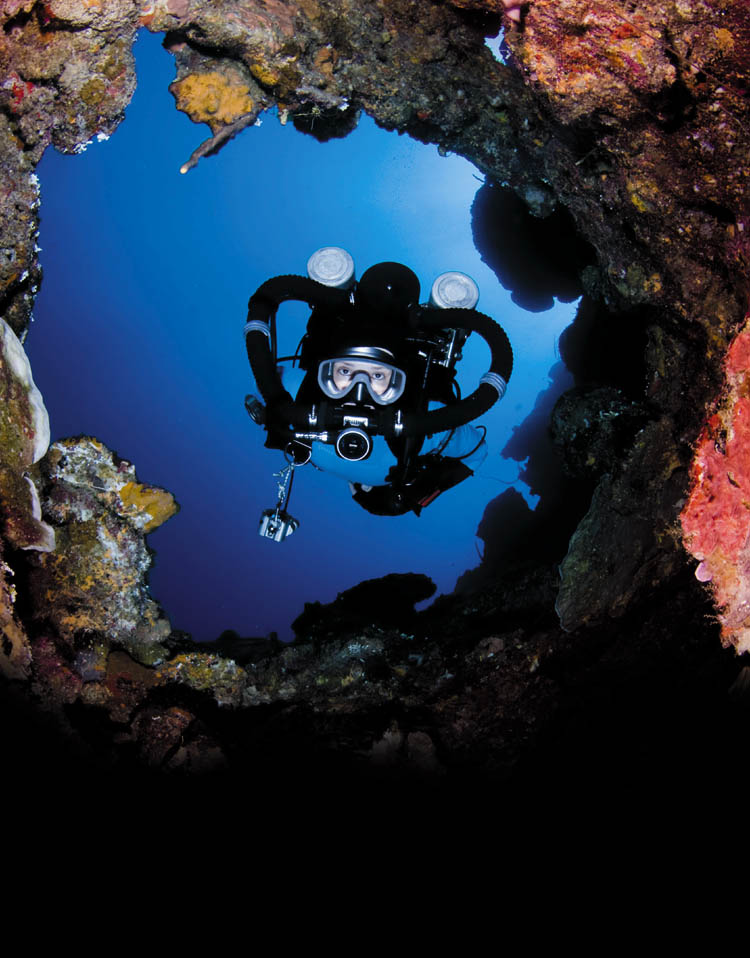 |
|
mixed-gas rebreather explorer. Only a few locations on the planet immediately come to mind. Divetech, located at the Cobalt Coast resort in Grand Cayman, was my first choice.
Divetech has been providing exceptional service for over a decade to everyone from the open water student to the extended range diver. Owner Nancy Eastbrook was actually one of the first divers in Cayman responsible for pushing to change the island’s long standing regulation of no decompression diving and a depth limit of 130 feet to the current unlimited depth and time regulations today. Nancy has compiled an astonishing quantity of open water to technical dive equipment over the past decade, including hundreds of aluminum 80’s, stage tanks, doubles, rebreathers, rebreather cylinders, compressors, oxygen and helium boosters, along with a complete shop of almost every little gadget and t-shirt one could desire.
Cayman itself is an exceptional location for underwater photography because of its geological composition. If you were to remove the surrounding ocean, the island of Grand Cayman is really the summit of a giant mountain. Replace the ocean, and within the distance of a casual swim from any shore, there are miles of shallow reefs that plummet thousands of feet down vertical walls containing massive coral overhangs, giant sand chutes, and unlimited photo opportunities. The extreme depths of the Cayman trench that surrounds the island provide deep up-welling currents that supply unbelievable water clarity, many times exceeding 200 feet.
Onto the Classroom
The first Advanced Diver Magazine photo week was to be a learning experience for all who attended. Being my first attempt to host such an event, I would learn many things that worked well, some that did not, and ideas on how we could improve on such events in the future.
Each participant signed up with a specific personal goal in mind — from as simple as desiring to improve the color of their photos, to wishing for an understanding of manual camera settings, and as complicated as multiple-strobe wide-angle photography.
Such a wide range of goals and experience did initially cause some tribulations; but with some assistance from Nancy and an
|
|
|
|
|
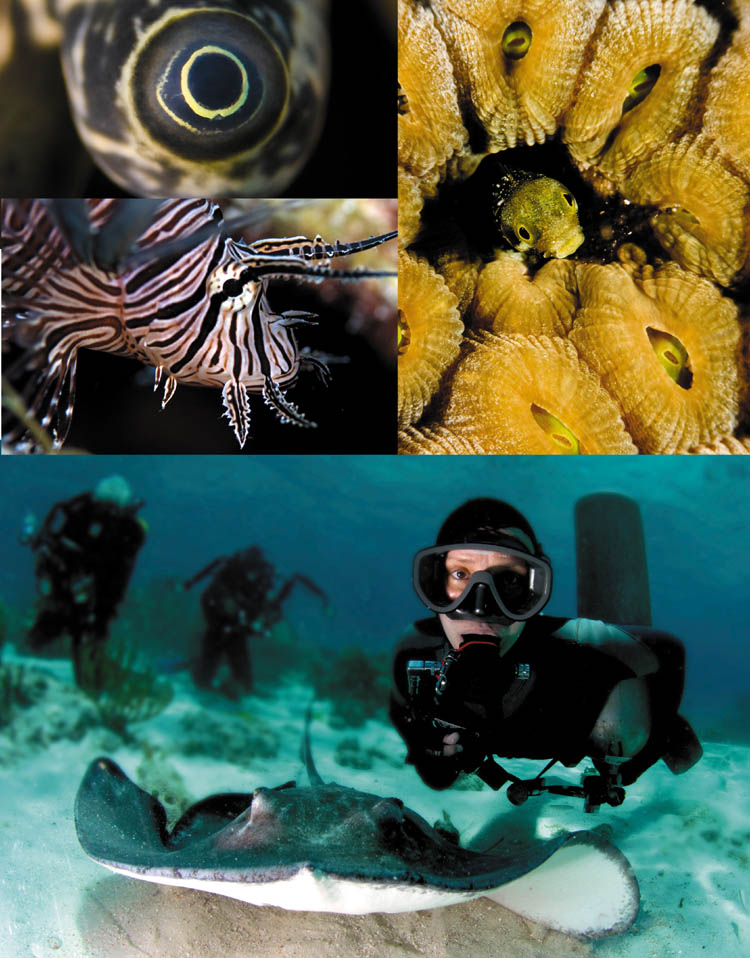 |
|
extra dive master, we were able to split the day boat into a deep rebreather team and a shallow open water group. This enabled the deeper rebreather photo team an ideal time and depth scenario for one long two-to-three hour dive down the vertical walls, ending each dive on a colorful reef. Meanwhile, the open water group completed two shorter excursions in mid-range depths, then met up with the rebreather team on the shallow reef.
Underwater photographers are unlike most divers who enjoy speeding along the reef attempting to cover as much ground as possible. Photographers enjoy casual dives that provide them with ample time to search, focus, and shoot —and if the first attempt did not get the desired results, time for a second, third, and tenth time….
Macro photographers can easily be found hovering around the same large coral head, or with knees in the sand pointing their cameras and strobes at some weary creature that’s attempting to stay hidden in its little hole. Only patience pays off for the diver!
Mixing both recreational divers and underwater photographers normally does not please either group. The anxious recreational diver feels slowed down and held back by the photographer attempting to shoot, or maybe the photographer misses desired shots because of the faster pace of the recreational diver.
Fish of a School Move Together
Bring a group with the same interest together, and an amazing progression occurs. Each diver then becomes a set of eyes and a model for all the others within the group. If something interesting is discovered during the dive, signals are shared to inform everyone of the discovery. If someone needs one or two underwater models to show scale or contrast, each team member eagerly learns just how difficult it can be to perform as an underwater model.
Interestingly enough, by the end of the photo week, the groups were planning tactics to capture very difficult wide-angle shots that required the combined efforts of three to five members. In another mutually beneficial effort, participants cooperated on night dives where they used spotter divers with giant underwater lights to assist with “getting the critter” photos.
Night Activities
Up early and dive all day means only one thing for those of us over 40: early bed times. But before bedtime we did manage to hold an evening photo course, critique some images, and talk amongst ourselves about how each diver felt they had done for the day’s shoot. This provided each photographer a night to think about some creative suggestions for how they could improve their skills during the next day’s dives. The week ended with a screen show of each diver’s best images for the week.
If you are a novice photographer wishing to just learn the basics, a semi pro looking to improve of your troubled areas, or a pro who would like to hang with divers with the same interests as you, please feel free to join our 2010 ADM photo week. |
|
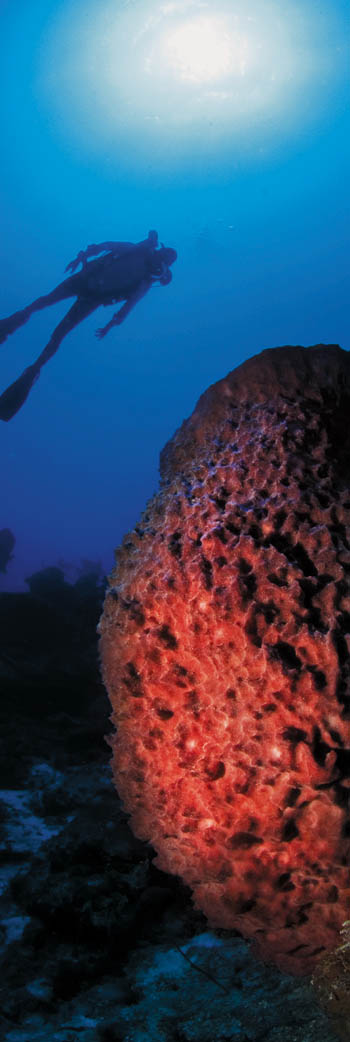 |
|
|
|
|
|
|
|